News
 Climate change threatens movement of endangered wren in the Kimberley
Climate change threatens movement of endangered wren in the Kimberley
Habitat degradation and erratic rainfall conditions are impacting the movement of birds through northern Australia’s fragmented landscape, a new study conducted at Mornington Wildlife Sanctuary on Bunuba Country has found. Analysing 17 years of data about the movement of nearly 800 endangered Purple-crowned Fairy-wrens in north-west Western Australia, researchers from Monash University have for the first time been able to identify exactly how human-induced habitat degradation and climate change are impacting the movement of birds who live alongside creeks and rivers in northern Australia.
Read the rest of the article here.
 Study shows climate change threatens movement of birds through northern Australia
Study shows climate change threatens movement of birds through northern Australia
Habitat degradation and erratic rainfall conditions are impacting the movement of birds through northern Australia’s fragmented landscape, a new study by Monash University has found.
Analysing 17 years of data about the movement of nearly 800 endangered purple-crowned fairy-wrens in north-west Western Australia, researchers have for the first time been able to identify exactly how human-induced habitat degradation and climate change are impacting the movement of birds…
Read the rest of the article here.
 Spring foe, Winter friend—cooperative behaviour trends in superb fairy-wrens
Spring foe, Winter friend—cooperative behaviour trends in superb fairy-wrens
A new Proceedings B paper explores the seasonal variation in cooperative behaviour displayed by superb fairy-wrens. Lead author, Ettore Camerlenghi, tells us more.
Why do some group-living animals live in a state of conflict with neighbouring groups while other species form peaceful multilevel societies, where groups can interact, tolerate each other, or even cooperate? A little Australian songbird, the superb fairy-wren, might provide clues to better understand what conditions promote intergroup harmony.
Read the rest of the article here.
 Social restructuring in harsh conditions promotes cooperative behaviour in songbirds
Social restructuring in harsh conditions promotes cooperative behaviour in songbirds
The superb fairy-wrens provided an ideal system for this investigation due to their multilevel society, which undergoes seasonal restructuring.
During the breeding season, individual groups defend territories, while in the non-breeding season, these groups coalesce into larger communities. By observing their behaviour in response to distress calls during both seasons, researchers assessed how social dynamics and environmental harshness influence cooperative behaviour.
Read the rest of the article here.

Wildfire threatens the survival of endangered purple-crowned fairy-wrens living along the rivers and creeks of northern Australia, our new research has found.
For almost two decades, we studied the fairy-wrens at a wildlife sanctuary in the far north of Western Australia. Over this time, one low-intensity fire and one high-intensity fire burnt through our study site. Both occurred late in the wet season, when fires generally burn at lower intensity.
Read the rest of theconversation article here.
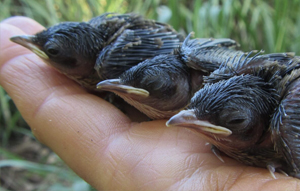
Endangered fairy-wrens survive Kimberley floods
When ex-Tropical Cyclone Ellie inundated the Kimberley with record flooding earlier this year the region and its inhabitants experienced large-scale devastation. This included the area’s native wildlife, with mass loss of life and habitat. But now, amidst the loss, there’s some good news to share.
Read the rest of the article here.
 Fieldwork in floodwaters
Fieldwork in floodwaters
January 2nd, 2023. We had taken our radios to bed the night before, just as a precaution. The water was already up to the parking area, which was as high as anyone had ever seen it, and it was still raining. I dislike rain generally and resent the periodic floods of the Wet season because they wash away the nests we’ve found, but I was looking forward to sleeping past 3:45am. It’s too dangerous to work along the creek when it’s raging, so storms give us a brief break from crack-of-dawn nest searching.
Read the rest of the article here.
 Fairy-wrens are more likely to help their closest friends but not strangers, just like us humans.
Fairy-wrens are more likely to help their closest friends but not strangers, just like us humans.
Multilevel societies are among the most complex societies known in nature. They are organised like Russian nesting dolls – individuals belong to family groups, which belong to clans, which belong to tribes. At each level, the relationships between these social units (individuals, families, clans and tribes) are stable and predictable. Such a social structure, which has been described in some primates , whales, elephants and more recently in birds, has likely characterised much of human evolution. In fact, it’s still common among many hunter-gatherer societies around the world.
Even though multilevel societies are documented across the animal world, it’s not entirely clear what their benefits are.
Read the rest of theconversation article here.
Mornington Wildlife Sanctuary evacuation
Each year countless purple-crowned fairy-wren nests are washed away in monsoonal floods that sweep across northern Australia. On 2 January, the Monash researchers studying fairy-wren ecology at the Australian Wildlife Conservancy’s (AWC) Mornington Wildlife Sanctuary in the Central Kimberley got their own taste of these floods when ex-tropical cyclone Ellie brought once-in-a-century floods to the region. Researchers and AWC staff living on sanctuary during the flood were safely evacuated to Broome. Although the waters have receded at the research station, it will likely be some months before conservation and research activity will resume.

PCFW researchers (l to r): Gill Holmes, Ian Hoppe, Ari La Porte, and Aidan Colligan preparing to evacuate Mornington Wildlife Sanctuary. At right, up to 2.5 m of water flooded into the AWC research facilities at Mornington Wildlife Sanctuary (Ari La Porte and Josh Guthrie/AWC).
Ornaments are equally informative in male and female birds.
New paper published:
Nolazco S, Delhey K, Nakagawa S, Peters A. 2022. Ornaments are equally informative in male and female birds. Nature Communication. 13(1):5917. doi:10.1038/s41467-022-33548-7.
Abstract:
Female ornaments are often reduced, male-like traits. Although these were long perceived as non-functional, it is now broadly accepted that female ornaments can be adaptive. However, it is unclear whether this is as common in females as it is in males, and whether ornaments fulfil similar signalling roles. Here, we apply a bivariate meta-analysis to a large dataset of ornaments in mutually ornamented birds. As expected, female ornament expression tends to be reduced compared to males. However …..
 We know heatwaves kill animals. But new research shows the survivors don’t get off scot-free
We know heatwaves kill animals. But new research shows the survivors don’t get off scot-free
Extreme heat waves can cause birds and mammals to die en masse. But it’s more common for an animal to experience relatively mild heat stress that doesn’t kill it. Our new findings suggest that unfortunately, these individuals can suffer long-term health damage.
Our study, published today, describes how exposure to hot and dry conditions can damage the DNA of nestling birds in their first few days of life. This can mean they age earlier, die younger and produce less offspring.
Read the rest of theconversation article here.
 “AWC in Conversation” live Webinar
“AWC in Conversation” live Webinar
For more than 15 years, a team of scientists led by Professor Anne Peters of Monash University has been studying a population of the Purple-crowned Fairy-wren, one of northern Australia’s most exquisite birds. Their wide-ranging project has uncovered fascinating details about the fairy-wrens’
Click there to watch the video
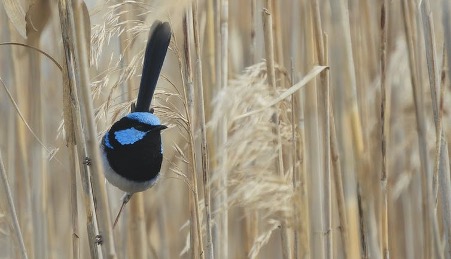 (The most social) bird of the year: why superb fairy-wren societies may be as complex as our own
(The most social) bird of the year: why superb fairy-wren societies may be as complex as our own
One mystery many biologists want to solve is how complexity develops in nature. And among the many social systems in the natural world, multilevel societies stand out for their complexity. Individuals first organise into families, which are members of bands, which are organised into clans.
Read the rest of theconversation article here.
 Iconic Australian fairy-wrens live in complex multilevel society, international study finds
Iconic Australian fairy-wrens live in complex multilevel society, international study finds
The research team studied social behaviour in a wild population of superb fairy-wrens, that breed cooperatively in small groups. They tracked almost 200 birds over two years by attaching a different coloured leg band to each individual. During this time, they observed who was hanging out with who and used their observations to build a complex network of the birds’ social associations.
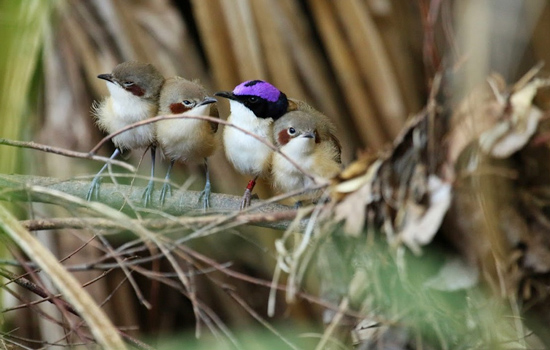 Fairy-wrens calculate their benefits when coming to aid others threatened by predators
Fairy-wrens calculate their benefits when coming to aid others threatened by predators
Avoiding predation is key for surviving in the wild and helping with predator defense seems a risky, selfless act.
“Such seemingly altruistic helping behaviour has puzzled biologists for a long time, because it does not make sense to risk your own life to help others without some offsetting benefits, but these have been hard to identify,” said lead study author Dr Niki Teunissen from the Monash University School of Biological Sciences.
Publication 100!
Press release:
 Purple Crowned Fairy Wren unlocks key to immune function
Purple Crowned Fairy Wren unlocks key to immune function
“Maintaining constitutive immune function (immune surveillance) is important for individuals to be prepared for new infections, but is potentially costly to the individual,” said lead study author, Dr Michael Roast, from the Monash University School of Biological Sciences.
“These costs can’t be measured using experimental methods that introduce immune challenges,” he said.
Rewilding immunology
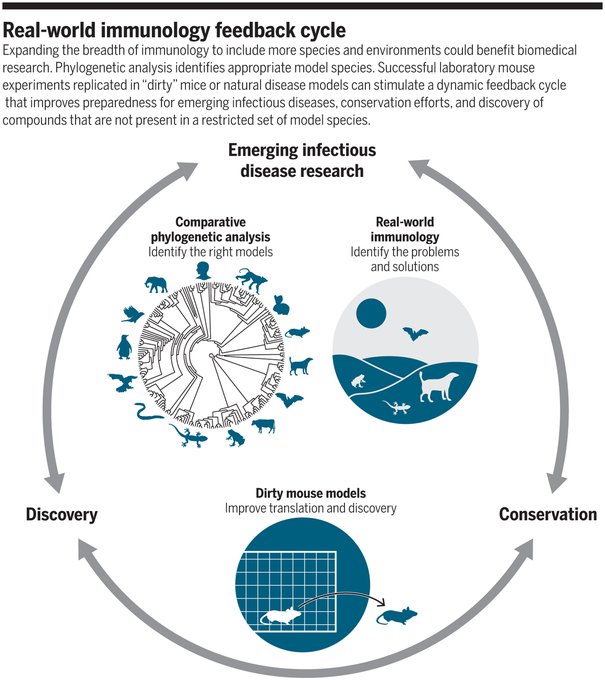
Flies AS, WACI Consortium. 2020. Rewilding immunology. Science 369 (6499), 37-38
Another Dr
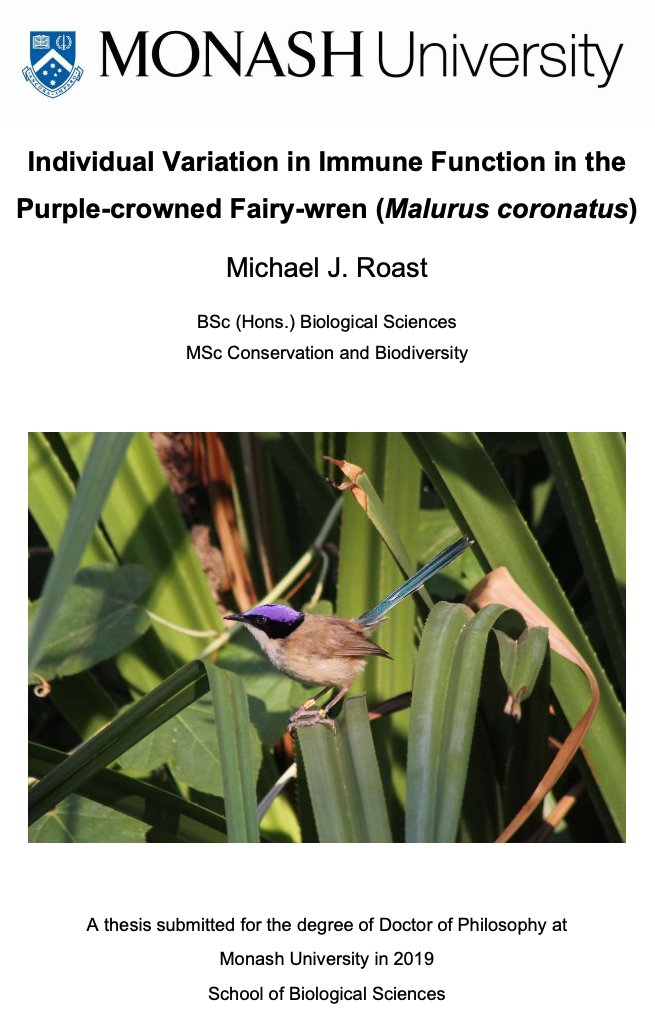
Watch out for those Dr. Teunissen publications:
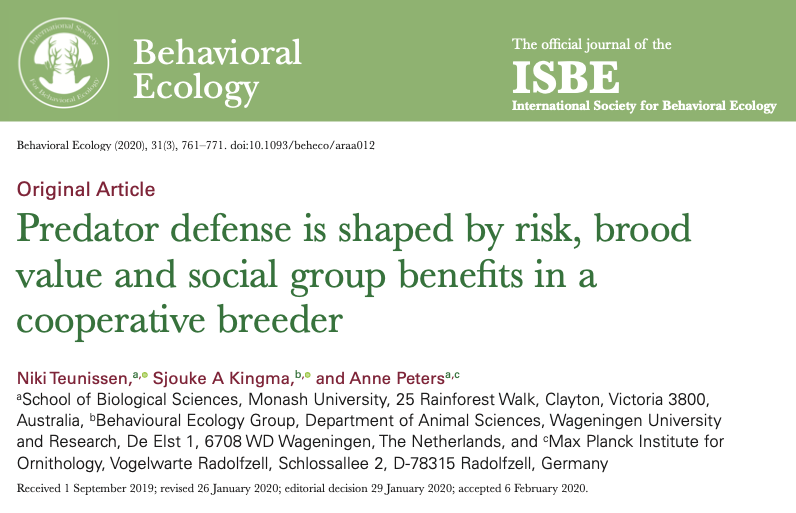
Another Dr!
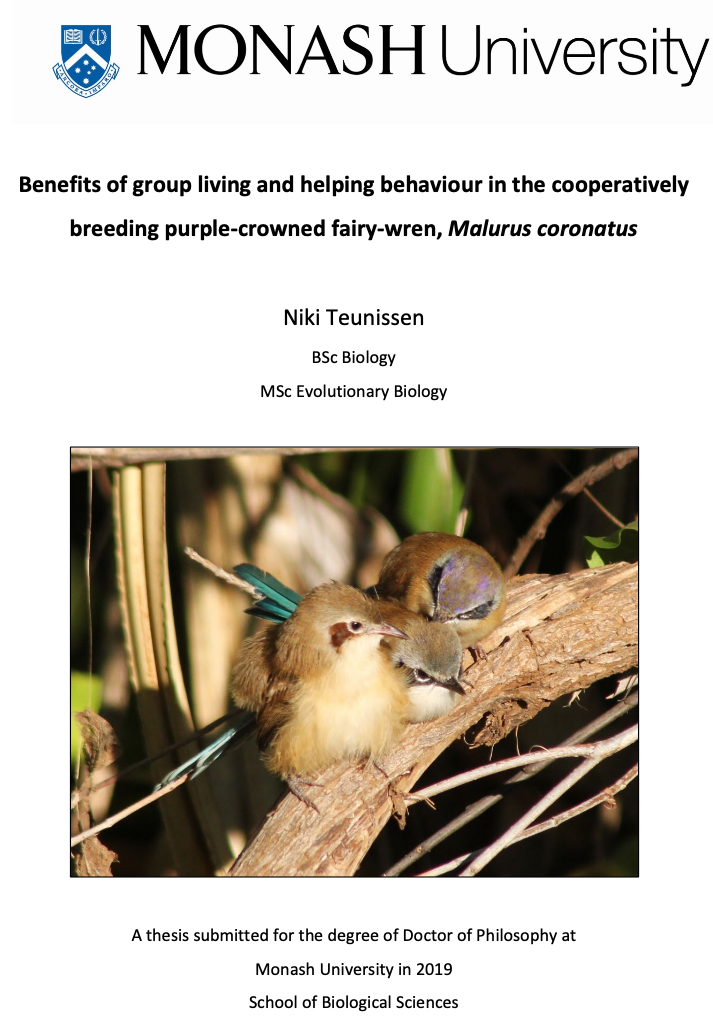
New Publication
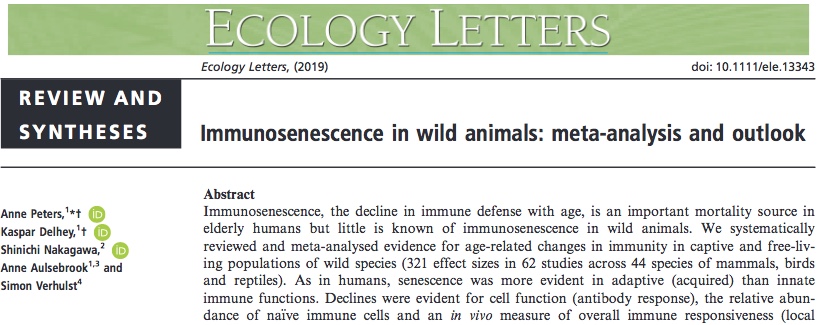
 Purple-crowned fairy-wren favours rain for breeding.
Purple-crowned fairy-wren favours rain for breeding.
The study confirms that our monsoonal birds, just like birds from the arid zone, are highly tuned to rainfall, something that was previously suspected but not formally quantified.
The researchers followed more than 500 nesting attempts from almost 200 pairs over five years to test which external factors regulate reproduction.
The results of the study are published today in the Journal of Animal Ecology.
Another Dr!
Dr. McQueen, with flying colours !
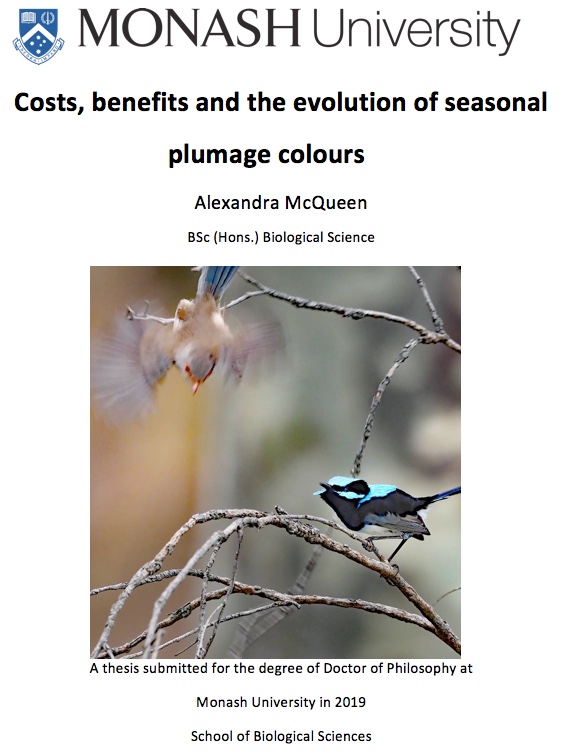
Student award success!
Sergio Nolazco Plasier was awarded a Holsworth Wildlife Research Endowment Grant for the project “Why are females ornamented? Testing competing hypotheses in an Australian passerine with mutual ornamentation”
Ettore Camerlenghi was awarded Holsworth Wildlife Research Endowment Grant for the project “Social networking during the non-breeding season: drivers and fitness implications of social complexity”
Sergio Nolazco Plasier was awarded a BirdLife Student Travel Award to attend the Australasian Society for the Study of Animal Behaviour Conference in Waiheke Island, July 2019
Niki Teunissen was awarded a BirdLife Student Travel Award to attend the Australasian Ornithological Conference in Darwin, July 2019
New Publications
Kaspar published two very cool papers on Gloger’s Rule:
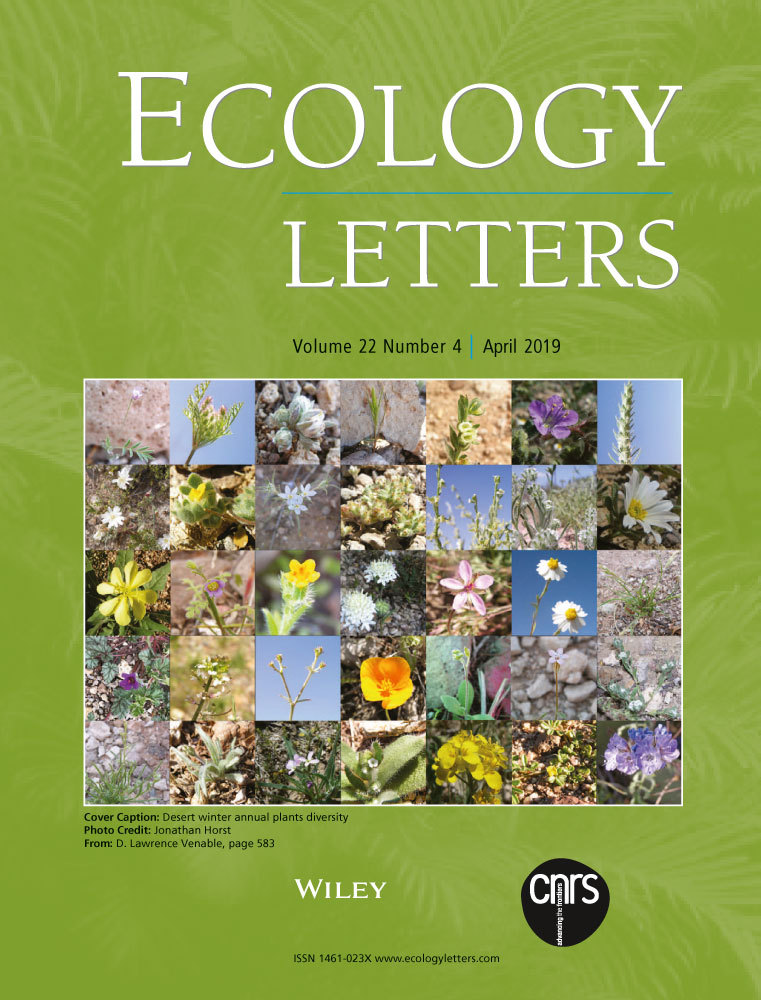
Another Dr!
It’s official – we have a DR. Fan!!
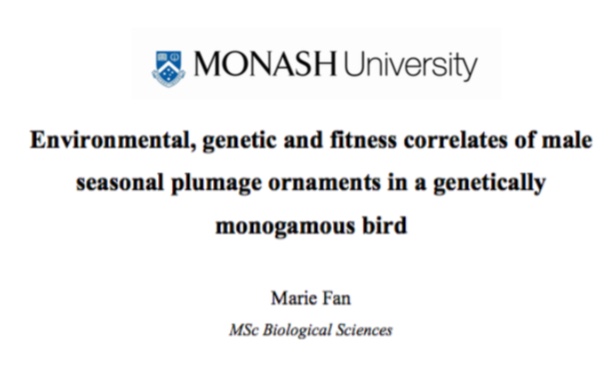
New Publication
Michael’s first PhD chapter
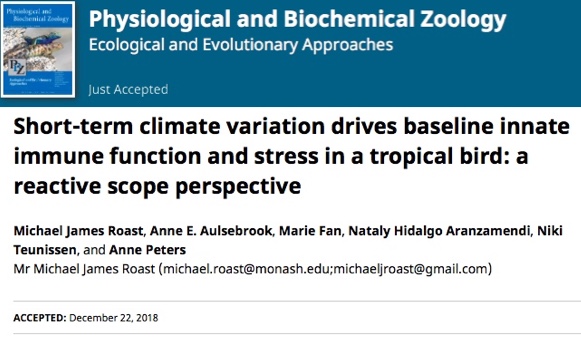
New Publications
Justin strikes twice: an exciting telomere paper


New Publication
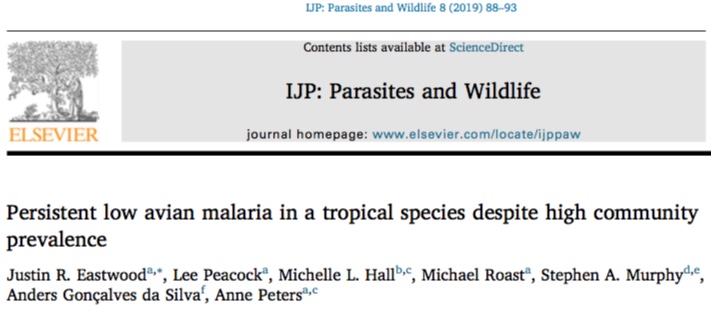
New Publication
Marie’s second paper was published in the Journal of Animal Ecology, it is a lovely paper. Check out the press release and video here.

Congratulations
We are very proud that Sjouke has been awarded The 2018 Dutch Zoology Prize (Nederlandse Zoölogieprijs 2018) for his work on ecological and evolutionary processes underlying group living and cooperation in animals.
Alex won BirdLife Australia & Birds New Zealand Prize for the best student talk at the Australasian Ornithological Conference 2017, and Michael won runner-up best student poster at the same conference!
New Publication
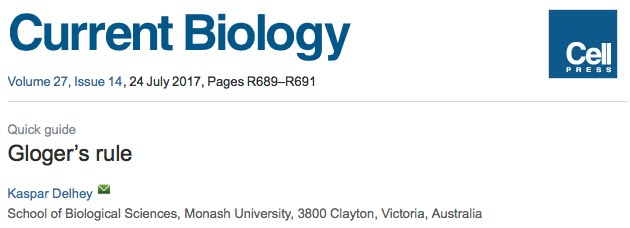
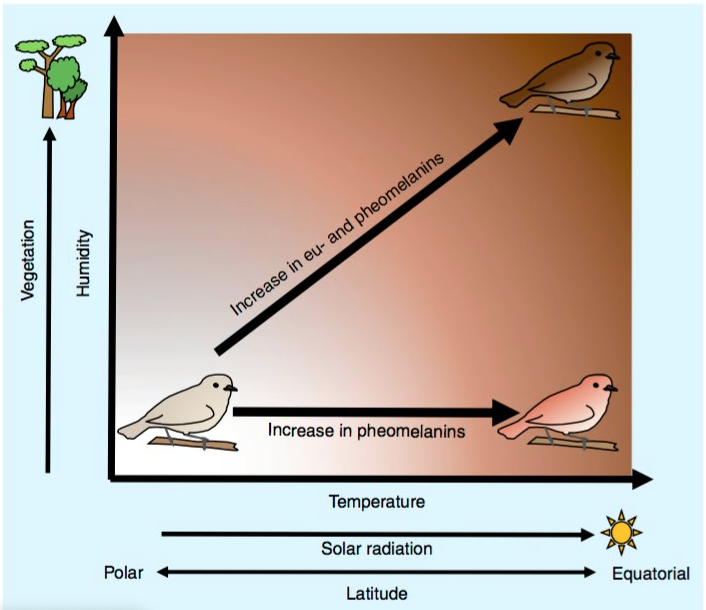
New Publication
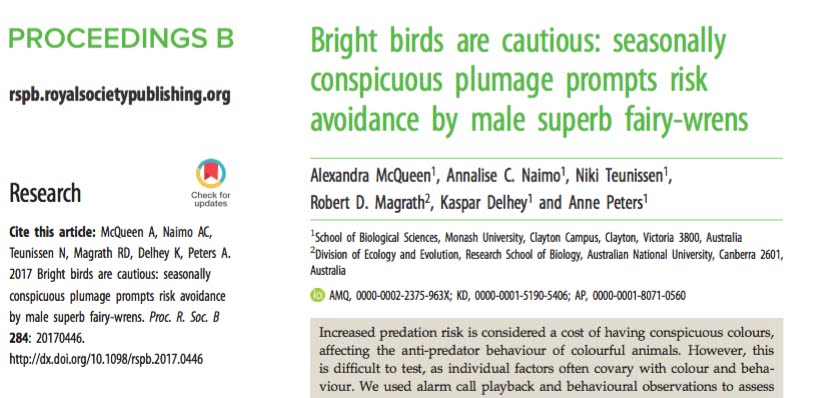
New Publication
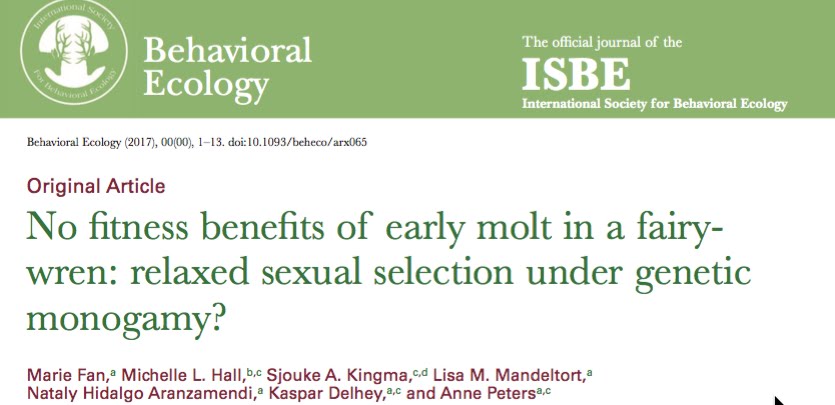
New Publication

 Front cover of the special issue
Front cover of the special issue
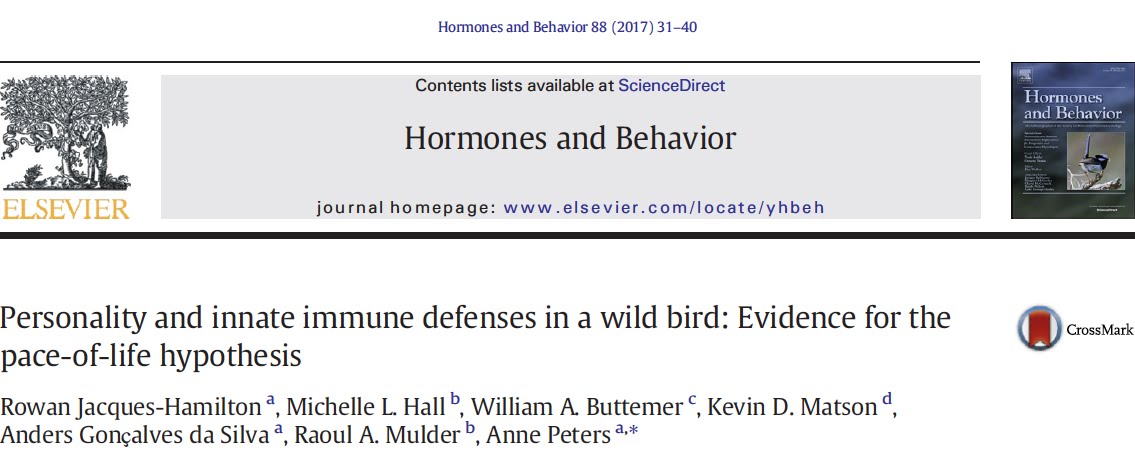
New Publication with a short title

New Publication
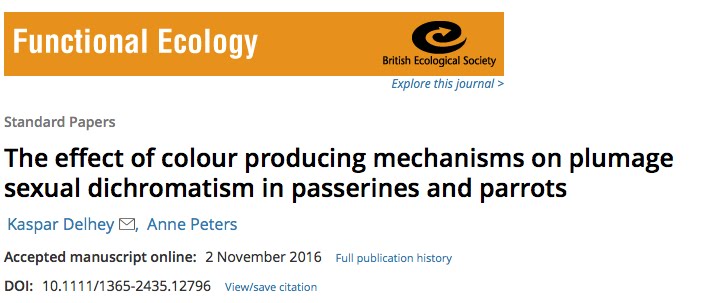
New Publication
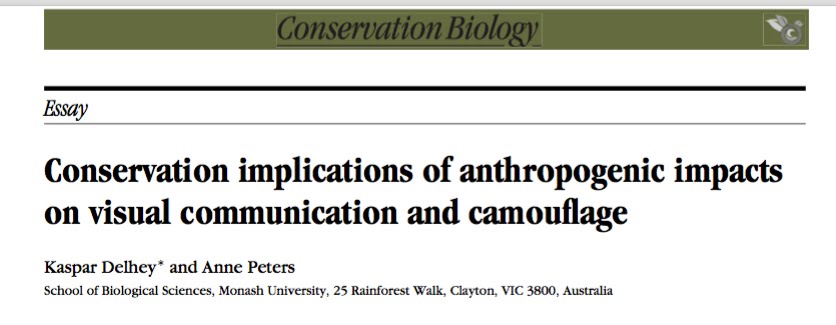
New Publication
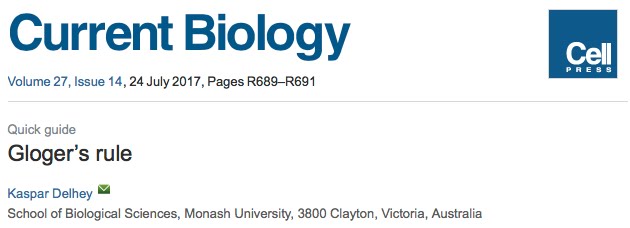
New Publication
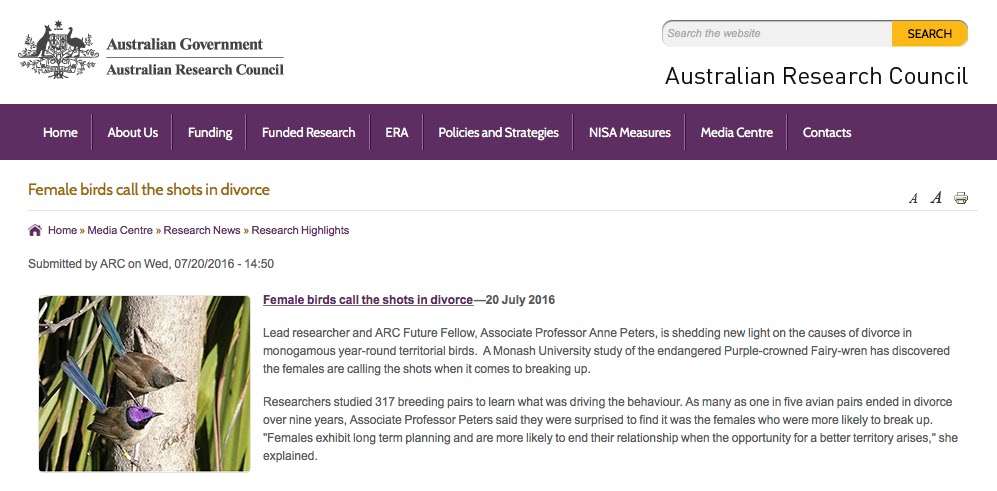
Successful field season
Congratulations
Join us
New Publication

New Publication
New Publication
New Post-doc
Field season May/June 2015 in full swing.

Successful student applications
Two successful students applications: Alex McQueen will study superb fairy-wrens, and Marie Fan will join the purple-crowned fairy-wren team. Well done ladies!
New Publication
Delhey K, V Delhey, B Kempenaers & A Peters. In press. A practical framework to analyse variation in animal colours using visual models. Behav. Ecol.
We present a user-friendly approach to analyse colour variability that summarizes complex patterns of chromatic variation within the perceptual space of receivers. This novel framework integrates into a single analysis the two pieces of information usually derived from visual models: cone stimulation values and pairwise contrasts between colours.
Check the paper out here.
Funding success!
ARC Discovery grant success, Anne with collaborator Simon Verhulst (Groningen University) were awarded a DP15 “Immune defense, disease and damage control in the wild “.
Watch this space, advert for post-doc to follow soon.
New Publication
New publication in Frontiers in Ecology and the Environment
New Publication
New publication in press at Journal of Avian Biology
Janet L. Gardner, Tatsuya Amano, Patrica R. Y. Backwell, Karen Ikin, William J. Sutherland and Anne Peters
Article first published online: 27 JUN 2014 | DOI: 10.1111/jav.00431
New Publication
New Publication
Janet L. Gardner, Tatsuya Amano, Brendan G. Mackey, William J. Sutherland, Mark Clayton and Anne Peters
Dynamic size responses to climate change: prevailing effects of rising temperature drive long-term body size increases in a semi-arid passerine
Global Change Biology
Accepted manuscript online: 19 DEC 2013 | DOI: 10.1111/gcb.12507



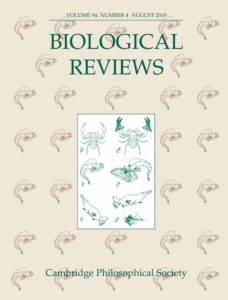 A review of Gloger’s rule, an ecogeographical rule of colour: definitions, interpretations and evidence.
A review of Gloger’s rule, an ecogeographical rule of colour: definitions, interpretations and evidence.  Front cover
Front cover

